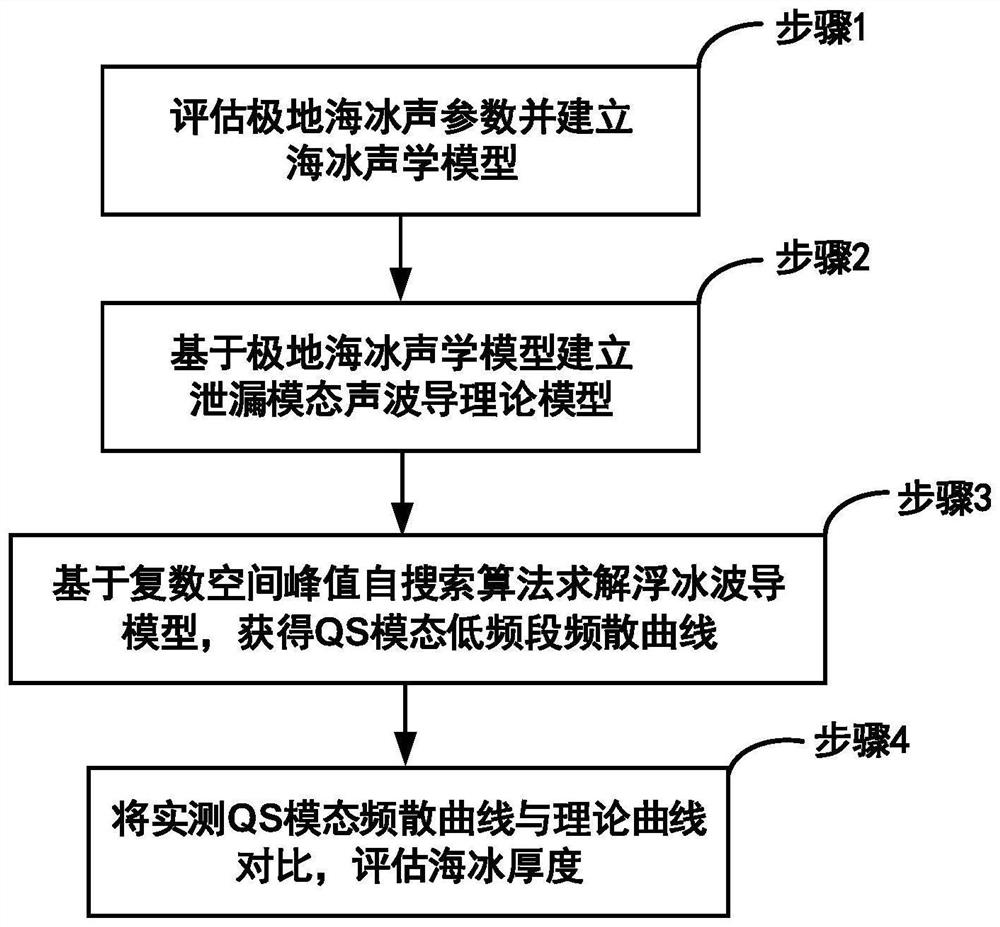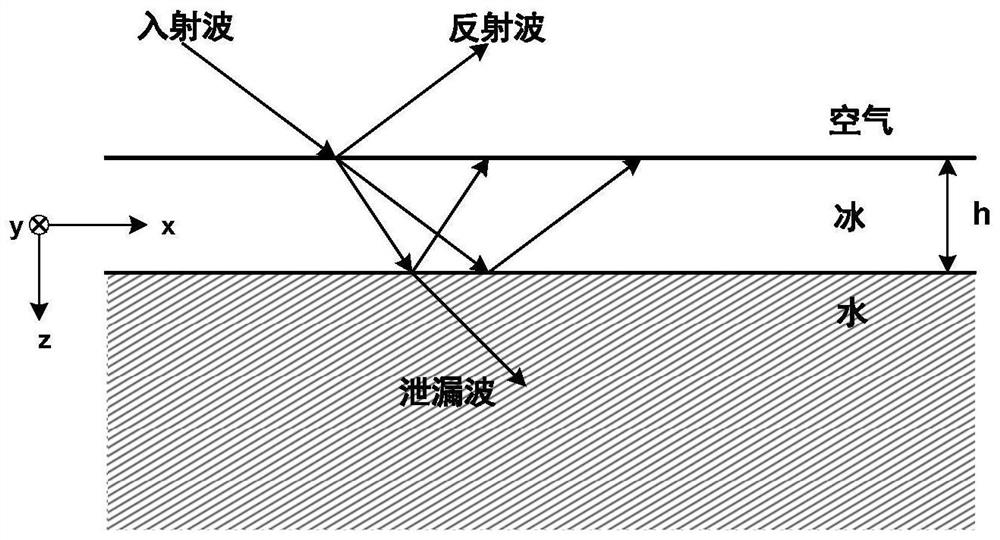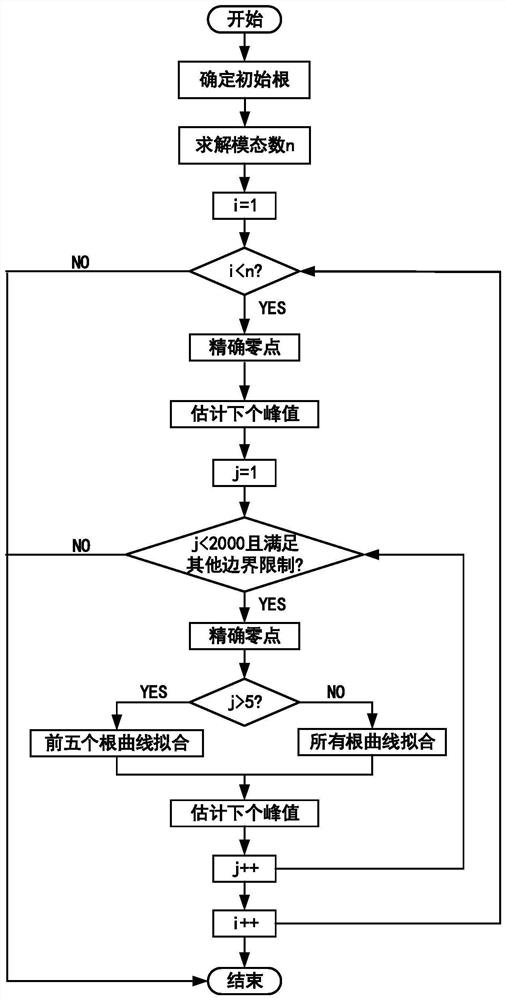Sea ice thickness observation method based on leakage modal acoustic waveguide characteristics
An acoustic waveguide and leaky mode technology, which is applied in the directions of using ultrasonic/sonic/infrasonic waves, using sonic/ultrasonic/infrasonic waves to analyze solids, measuring devices, etc. The problems of low estimated value of thickness spatial distribution and insufficient measurement accuracy of sea ice thickness have achieved the effect of improving the effectiveness and stability of observations, improving the efficiency of model solution, and reducing the difficulty of field operations.
- Summary
- Abstract
- Description
- Claims
- Application Information
AI Technical Summary
Problems solved by technology
Method used
Image
Examples
Embodiment approach 1
[0040]Compared with the well-known Lamb wave waveguide characteristics in the infinite free plate, there are two big differences in the derivation and solution process of the waveguide equation in floating ice. On the one hand, due to the asymmetry of the boundary conditions, the floating ice cannot be equivalent to a completely symmetrical structure, so it cannot be simplified to symmetric and antisymmetric modes to solve separately. On the other hand, due to the similar acoustic impedance of ice and water, the elastic wave energy cannot be confined in the ice layer, and the waveguide appears leakage mode. Accompanied by this non-negligible attenuation of energy propagation, the corresponding wavenumber k solution needs to be done in complex space. This method deduces the dispersion equation of the ice waveguide under the ice-water coupling state, and realizes the mode-by-mode solution of the ice-water coupling model based on the complex space peak self-search algorithm, and ...
Embodiment approach 2
[0058] Steps 1-3 are the same as the specific implementation mode 1, but the thickness of the ice layer is set as an uncertain parameter, so as to obtain the QS modal frequency-thickness product-wave velocity dispersion curve of the ice floe waveguide as follows: Figure 6 , the wave velocity of the QS mode under a certain frequency excitation in a given sea ice is obtained through the field ice-acoustic experiment, according to Figure 6 Based on the mapping relationship between the modal wave velocity and the frequency-thickness product, the actual thickness of sea ice in the current ice region can be quickly and accurately estimated.
[0059] In summary, the sea ice thickness observation method proposed in the present invention derives the dispersion equation of the ice-floe waveguide under the ice-water coupling state, and realizes the modal solution of the ice-water coupling model based on the complex space peak self-search algorithm, and obtains the ice-water coupling mod...
PUM
 Login to View More
Login to View More Abstract
Description
Claims
Application Information
 Login to View More
Login to View More - R&D
- Intellectual Property
- Life Sciences
- Materials
- Tech Scout
- Unparalleled Data Quality
- Higher Quality Content
- 60% Fewer Hallucinations
Browse by: Latest US Patents, China's latest patents, Technical Efficacy Thesaurus, Application Domain, Technology Topic, Popular Technical Reports.
© 2025 PatSnap. All rights reserved.Legal|Privacy policy|Modern Slavery Act Transparency Statement|Sitemap|About US| Contact US: help@patsnap.com



